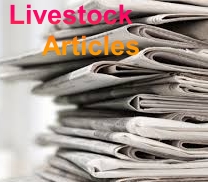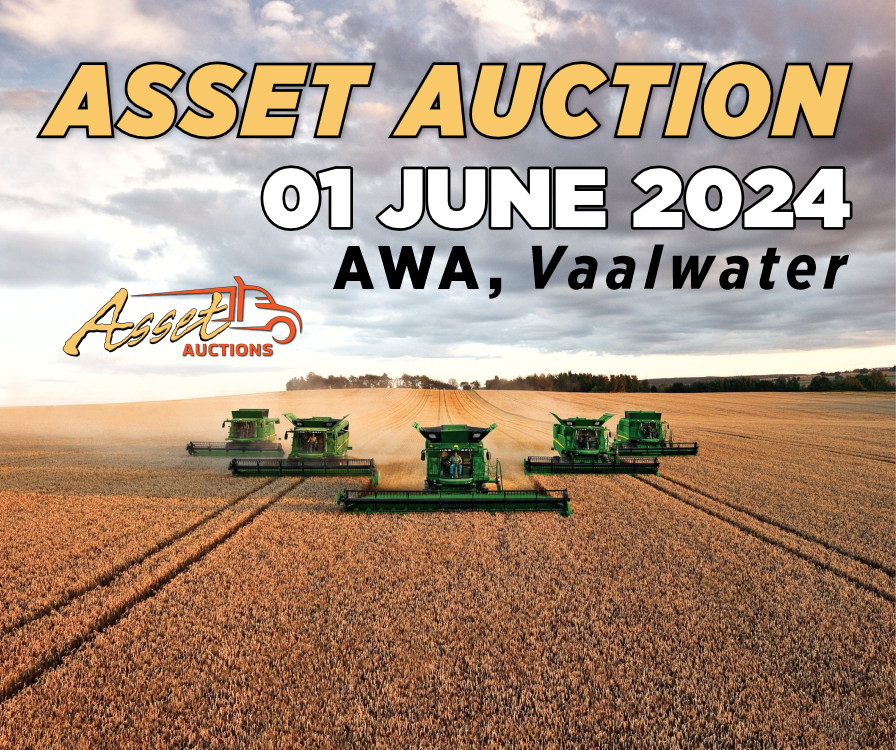Choosing a Pig Breed
Pig Farming in South Africa
Black skinned breeds are less vulnerable to sunburn than improved breeds.
When starting a pig farm, you need to choose a breed that would suit your level of skill and management. According to Pigs for Profit by Drs Jim Robinson and Mary Louise Penrith these breeds can be divided into two major groups, namely unimproved and improved breeds.
The unimproved pigs are usually local or indigenous breeds, such as the locally bred Kolbroek or SA Landrace, which are suited for free range and more extensive production systems. Whereas the improved breeds are modern breeds, such as the Large White or Duroc, primarily used in intensive commercial production systems.
The unimproved breeds are a good option if you are a beginner with little experience with pigs, if you are unable to provide the quality of housing and feed needed by a modern pig and if you have a market that would accept or prefer this type of pig.
What’s more, you will not have to get rid of all your pigs if you later want to upgrade to a higher level of management, but can merely use a modern boar or artificial insemination on your sows to improve the productivity in your piggery.
Unimproved Breeds
These breeds are usually black skinned with long black or spotted coats rendering them less vulnerable to sunburn. They are generally hardy, able to tolerate a wide range of temperatures, resistant to diseases and require little management making them ideal for free-range or village production. They also have low water and feed requirements, but will obviously perform better the more you feed and take care of them.
While these breeds usually have good mothering instincts, the sows produce small litters with only five to eight piglets, although this might be more if they are well-fed. Another drawback is that they are small to medium sized and tend to produce a lot of fat. It is therefore important to secure a market where there is a demand for this meat, before starting a piggery venture with these breeds.
Improved Breeds
Improved breeds thrive under intensive production conditions.
These breeds are usually large white-skinned pigs with fine sparse white hair, which renders them vulnerable to sunburn. They easily suffer from heat stress when temperatures get too hot. They are not as resistant to diseases as the unimproved breeds and require sound management, good quality feed and water to perform well.
On the plus-side they are highly productive, producing litters of ten and more piglets at a time. Sows might however sometimes need assistance with the raising of their piglets. They produce little fat in relation to the amount of meat produced, in comparison with unimproved breeds.
The large white is a big pig with exceptional growth rate.
Since no breed is perfect and each breed has its own unique strengths and weaknesses, the ion of a breed is entirely a matter of personal choice. When making this choice, you should not only consider your own production skills, but also whether you have a sustainable market for your produce and whether you would be able to supply the kind of nutrition and comfort needed by the specific breed to thrive.
Strategic cross breeding can be used to enhance meat quality, with the offspring of these crosses being sold to the market.
The Large White
This English breed was introduced into South Africa around the 1890s. As the name suggests, it is a large breed with white skin that produces large healthy litters with exceptional growth rates and feed efficiencies. They make good protective mothers and the boars are good workers, although some strains mature late, after seven to eight months of age.
Large White pigs are considered the ultimate dual purpose breed and when crossed with any other pure breed, will produce offspring (progeny) of excellent bacon type. They produce female stock with excellent reproduction qualities, when crossed with the Landrace.
The Landrace
Landrace pigs have excellent growth rates.
The Landrace is a Danish breed with white skin that developed out of crossings of Large Whites with native Danish Pigs. They were first imported from Holland into South Africa in 1952. The breed is associated with excellent growth rates and feed efficiency, while the improved breed is recognised for its great mothering traits; producing large litters with regularity over long periods.
The South African pig progeny testing scheme, started towards the end of the 1950s, resulted in such remarkable progress, that the breed became known as the South African Landrace. According to David Visser’s book, Modern Pig Production, the South African strain is associated with durability problems due to its extreme lightness of bone, while some of the excessively muscled overseas strains are highly susceptible to stress, exacerbated by hot climatic conditions and long distances to the market.
The Chester White
This breed originated in the United States from a crossing between Yorkshire and Lincolnshire animals. The first Chester Whites were imported from the United States into South Africa in 1983. The breed, which has white skin, is medium sized, has good bones and makes good working boars. They thrive under extensive and semi-intensive conditions and are primarily used as a mothering breed crossed with Large Whites or Landraces. There are not many breeders of Chester Whites in South Africa.
The Duroc
Duroc boars are primarily used in crosses with white breeds.
This rusty red coloured breed originated in the United States from four strains of red pigs. It was first imported into South Africa from Canada in 1980, to make available a third breed, primarily for crossbreeding purposes.
The boars have good libido and are primarily used in crosses with traditional white breeds, producing offspring with excellent growth rates, feed efficiency and meat quality. Modern Pig Production, advises the marketing of all offspring, because they inherit half of the Duroc genes responsible for the reddish brown colour of the breed which s problems at the abattoir. The Duroc breed, nevertheless, produces well marbled meat that is significantly better than that of most other breeds.
The sows produce large litters, but are regarded as poor mothers. The breed is not very susceptible to stress.
Kolbroek
The Kolbroek is an indigenous South African breed that looks as if it is wearing spotted pants.
The Kolbroek is an indigenous South African breed. Various theories exist about the breed’s origins and how it derived its name, one being that the name refers to the spotted appearance of the breed since the Afrikaans word “Kolbroek” can be translated into “spotted pants” in English.
The breed is great for outdoor production, as they are hardy, easy-going, excellent foragers and able to survive on very little. According to David Visser’s book, Modern Pig Production, they will eat almost anything edible, whether it is fallen fruit in an orchard, vegetable waste from the kitchen or crop residues from the garden.
Their dark skins also render them less vulnerable to sunburn than the white breeds. The sows are docile and make good mothers. They are moderately prolific, producing litters varying between 6 to 9 piglets. Crossings with breeds such as the Duroc and Large White produces progeny with improved growth rates, feed conversion as well as meat and carcass quality.
Kolbroek meat on its own is not in high demand in the mainstream market due to the meat characteristics and stigmatisation, but there seems to be a slight growth in demand from traditional, the slow food and free-range market.
The Piètrain
The Piètrain are primarily crossed with other breeds to improve meat yield.
This medium sized white breed with black spots originated in the village of Piètrain, Belgium. It has shorter legs than most breeds and is stockier in build and quite broad around the back.
The black hair is not as deeply pigmented as other black or black spotted breeds. The first Pietrains were imported into South Africa in 1997. The boars are well muscled and ready to be used for reproduction when they are around eight months old. They are primarily used on other breeds to improve meat yield. The sows, while prolific, are generally poor mothers.
The Large Black
There are hardly any purebred Large Black pigs still available.
The Large Black a large all-black pig with large and lopped ears that originated from the Old English Hog established in the 16th and 17th centuries. It was first imported into South Africa around 1910 and was the most popular breed in the country until improved white breeds became available.
It is highly unlikely that purebred specimens are still available in the country. The breed is great for production outdoors, as they are hardy, easy-going and excellent foragers. They are also less vulnerable to sunburn, than the white breeds. The sows are docile, prolific, make good mothers with exceptional milking ability and are able to rear sizeable litters off simple rations.
Over the years, the meat has become stigmatised because of the breed’s black colour and the black pigment, causing it to resemble round black seed in the meat, has also rendered it unpopular with baconers. Niche markets for Large Blacks and their crossing might however exist, especially in traditional, the slow food or free-range markets.
The Hampshire
The Hampshire has lost favour because of it carrying a gene that negatively affects meat quality.
The Hampshire derived from the old English breeds. It is a black pig with a band of white skin and hair surrounding the shoulders and sometimes extending down across the forelegs.
The neck of this breed is longer than that of most other commercial breeds. The breed was first imported into South Africa during the 1980s to make available a new breed for crossbreeding. While still found on many farms in the United States, the breed has lost favour in European countries, Canada and even South Africa because of its dark skin colour and it carrying a gene that has a negative impact on meat quality.








